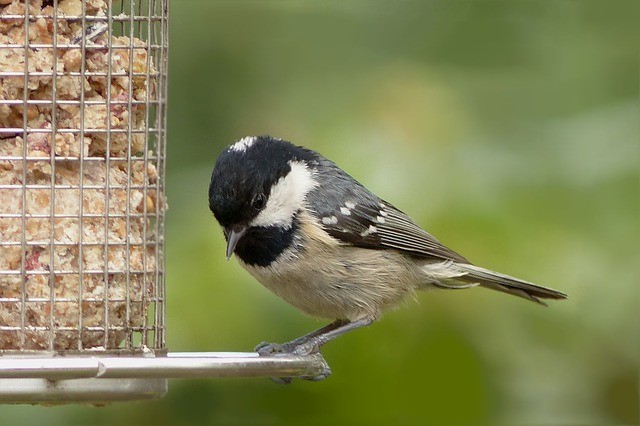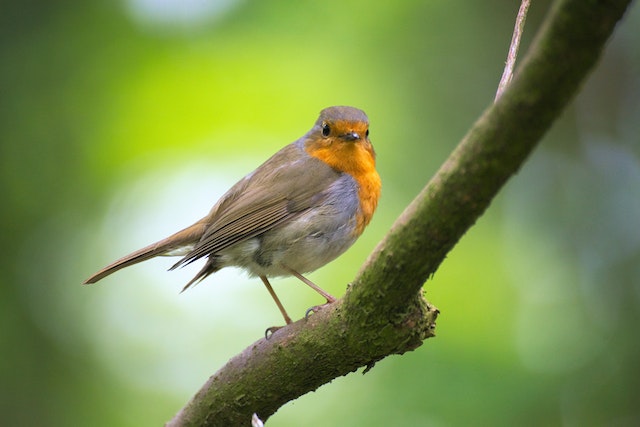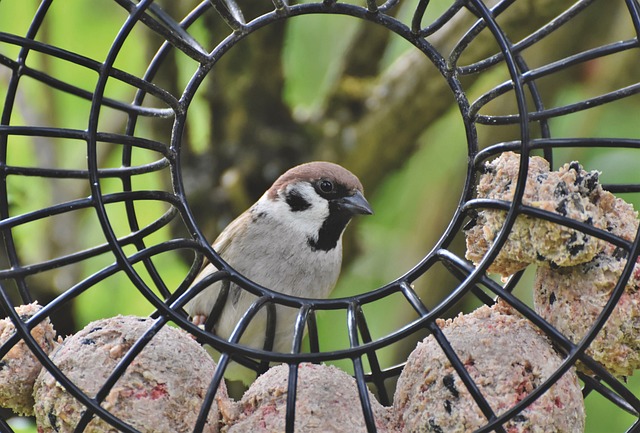When a cold snap approaches, it’s time to think about helping garden birds by making homemade fat balls. But, they are also great food to feed birds all year round.
Making homemade fat balls for birds is a cheap and fun way of encouraging more birds to visit your garden, and those extra calories could make the difference for winter survival. If you’re looking for other ideas on what to feed garden birds, read this post on the best types of bird feed for all year round.

Ingredients for Homemade Fat Balls
Fat – Lard or suet is a good fat base to use. You are looking for one part fat, to two parts dried ingredients for a good setting consistency.
Wild Bird Seed – you can buy this from most garden centres, supermarkets or online.
Dried Fruit – optional, but most sorts of dried fruits can be added to make an interesting meal. I like to use raisins and chopped dates.
Nuts – optional, but I like to add a few walnuts.
Ingredients you should not give to birds:
Cooked oats – oats become glutinous when cooked, and this can congeal to hard paste around a bird’s beak. Uncooked oats are fine to use.
Bread – bread has hardly any nutritional benefits for birds, despite being something that people have thrown into their garden for years. Stale or mouldy bread can also be harmful to bird health.
Cooked Meat Fats – It used to be common to save leftover meat fat from cooking, such dripping as from roast beef and pork. But using fat that has previously been cooked with, mixed in with meat juices, makes a mix that is very greasy. This can have a damaging effect of bird feathers, making them lose their waterproof and insulating qualities. Fat from poultry should also be avoided as there could be a risk of salmonella developing that could harm garden birds.

Method to Make Fat Balls for Birds
The method of making homemade fat balls is a simple one. You just melt the fat in a pan over a low heat, or in a microwave, and add the dried ingredients.
You are looking for an even coating of fat over the seeds. Then put the mixture into moulds to cool and harden. Put them in a fridge overnight, and they will be ready to put in the garden the next day.
Moulds for Homemade Fat Balls
Coconut Shells – I really like to use half coconut shells with a hole drilled through the top. Just add your mixture and let it set in the fridge, then just tie it up on a tree branch. The benefit of using coconut shells for homemade fat balls is that they are sturdy and strong, they can be reused and they look attractive.
Yoghurt Pots – clean the pots, then make a small hole in the bottom. Get some garden string and thread it through the hole. Tie a large knot so the string doesn’t go back through, or tie it around a small stick to secure it. Hold the other end of the string as you pour in the mixture, so that the string runs through the centre of your fat ball. When it has cooled and hardened, remove the yoghurt pot and you should have a homemade fat ball ready to hang.
TIP: Lining the yogurt pot with cling film first makes it easier to remove, and your fat balls are more likely to stay intact!
Margarine Tubs – use like coconut shells. They work just as well, although they might not be as pleasing to the eye!
Plant Saucers / Drip Trays – Pour in the mixture and allow to set. Then just leave outside on a bird table.
Mould with your hands – you can also just make the mixture into ball shapes using your hands. One set, you can put them in any wire bird feeders. Feeders with large gaps work best for homemade fat balls, as it allows birds to reach it easily. Read more about the best types of bird feeders!

Fat Ball Troubleshooting
Sometimes, making homemade fat balls can result in a mixture that crumbles easily, or just won’t set properly. Here are some tips to help.
It could be that you have too many dry ingredients for the fat to cover, making the cooled mixture unstable. Try adding more fat to bind it better. Remember, the general rule if one part fat to two parts dried ingredients, but this can be tweaked depending on the fat you use.
Using lard results in a softer mixture, whereas suet sets a little harder. You could try using a combination of fats for your homemade fat balls to get the setting consistency right. Setting consistency also depends on the mould you want to use. If you want it to hold its shape after being in a yogurt pot, use fats that set firmer. If using a tub or coconut shell, softer sets will stay put.
Is it Cheaper to make your own Fat Balls for Birds?
It’s a good question, and not one that has a simple answer!
On one hand, it may seem like it would be cheaper to make your own fat balls for birds than to buy them, but depending on what ingredients you use, it can be more expensive. Making your own fat balls requires time and materials that you may not have available, and if you make a mistake, you could end up wasting a lot of material.
Most people opt for store-bought fat balls as they are convenient and easy to find. However, making your own fat balls can be cheaper but can also help the environment.
When you buy ready-made fat balls, they usually come in plastic packaging that contributes to pollution and takes hundreds of years to decompose. By making your own fat balls from ingredients available in any supermarket or local health store, you can eliminate this environmental impact.
In addition, this will save you money as you won’t need to pay for expensive packaging or delivery costs associated with buying fat balls online.
As we become more conscious about sustainability and reducing our carbon footprint, making your own fat balls is an easy way to do both while hopefully saving money at the same time! So why not give it a try next time you’re looking for ways to attract more birds into your garden?
Ready to make your own fat balls to help garden birds through the winter? Share your recipes and tips in the comments!

My little babies get all the bacon fat I don’t end up using, and it pisses the dogs off.
I bet it does! Thanks for your comment.
If you read the article, it states not to use left over meat fats. Lard is better.
I make mine with peanut butter and the birds go crazy for it! I use whatever I have an abundance of, cereals, oats, seeds, dried fruit, regular fruits/veggies etc
I have excess Weetabix can i use this as part ingredients for fat balls?
Hi, yes Weetabix is thought to be safe for birds, as long as it is unflavoured and unsweetened. Thanks for your comment!
That’s a really good idea! I buy weetabix for my digs to help keep them ‘regular’ . But I hadnt thought that it would be safe for birds to eat too.